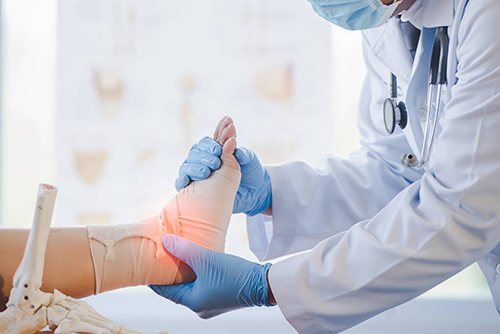
Orthopedic surgery and orthopedics (alternatively spelled orthopedic surgery or orthopedics) is the branch of surgery concerned with conditions involving the musculoskeletal system. Orthopedic surgeons use both surgical and nonsurgical means to treat musculoskeletal trauma, spine diseases, sports injuries, degenerative diseases, infections, tumors, and congenital disorders.
The name was derived from the two ancient Greek words 'Orthos', meaning 'straight', and 'paidion', meaning child. Although orthopedics brings to mind the treatment of traumatic or wear and tear issues, more often it is congenital skeletal abnormalities like scoliosis of the spine and other bone deficiencies which are treated in the field.

As we must move for daily activities, the musculoskeletal system is one of the most intensely used systems of the body, resulting in problems of its wear and tear as a person ages. Additionally, those people who play a large amount of sports may experience injuries such as rotator cuff tears or meniscal problems in their knees. Traumas are also another major cause of problems, with major impacts often bringing about serious orthopedic problems.
Our team of orthopedic surgeons uses the latest techniques and state-of-the-art technology to improve the level of care offered to people with musculoskeletal problems. From diagnosis to treatment, our doctors are at the forefront of employing advanced technologies and techniques to produce the best results for their patients.
Our Orthopedic team is specialized in the diagnosis and treatment of disorders of the bones, joints, ligaments, tendons, muscles, and nerves (musculoskeletal system). Subspecialties within the department include adult reconstruction, pediatrics, sports, trauma, spine, foot, hand, shoulder, elbow, and orthopedic oncology.
Our orthopedic surgeons in IRAN have expertise in all areas of orthopedics, including:
-
Joint replacement (adult reconstruction, revision, and replacement)
-
Fracture care and trauma
-
Hand surgery
-
Shoulder surgery
-
Microvascular procedures, such as nerve repair and nerve and muscle grafts
-
Foot and ankle injuries
-
Spine disorders
-
Pediatric orthopedic conditions
-
Sports injuries
-
Limb deformity
-
Tumor surgery for bone and soft tissue cancer
At HGH Health, we also offer our patients other treatment possibilities such as arthroscopic shoulder and knee joint treatments if these treatments better suit their medical case and orthopedic problem.
Arthroscopy is a minimally invasive surgery procedure performed with the arthroscope - a form of the endoscope driven into the joint through a microincision for the treatment or diagnosis of joint damage and orthopedic disorders. Advantages include:
-
short stay at the hospital (1, maximum 4 days);
-
fast examination - 30 - 60 minutes;
-
reliable accurate diagnostics;
-
minimally invasive - insignificant damage to the tissues;
-
shortened rehabilitation period.
The advantage of arthroscopy over traditional open surgery is that the joint is not open completely. Instead, when performing an arthroscopic surgery, only two small holes are made - one for inserting the arthroscope, another one is for the surgical instruments. This reduces the process of the postoperative recovery and increases the chance of success for the surgery, since the degree to which the connective tissues are damaged is much lower compared to the open surgery. Most often the arthroscopy is performed on knee joints, shoulder joints, elbow joints, radiocarpal joints, hip joints, ankle joints, or foot joints.
Knee Joint Arthroscopy
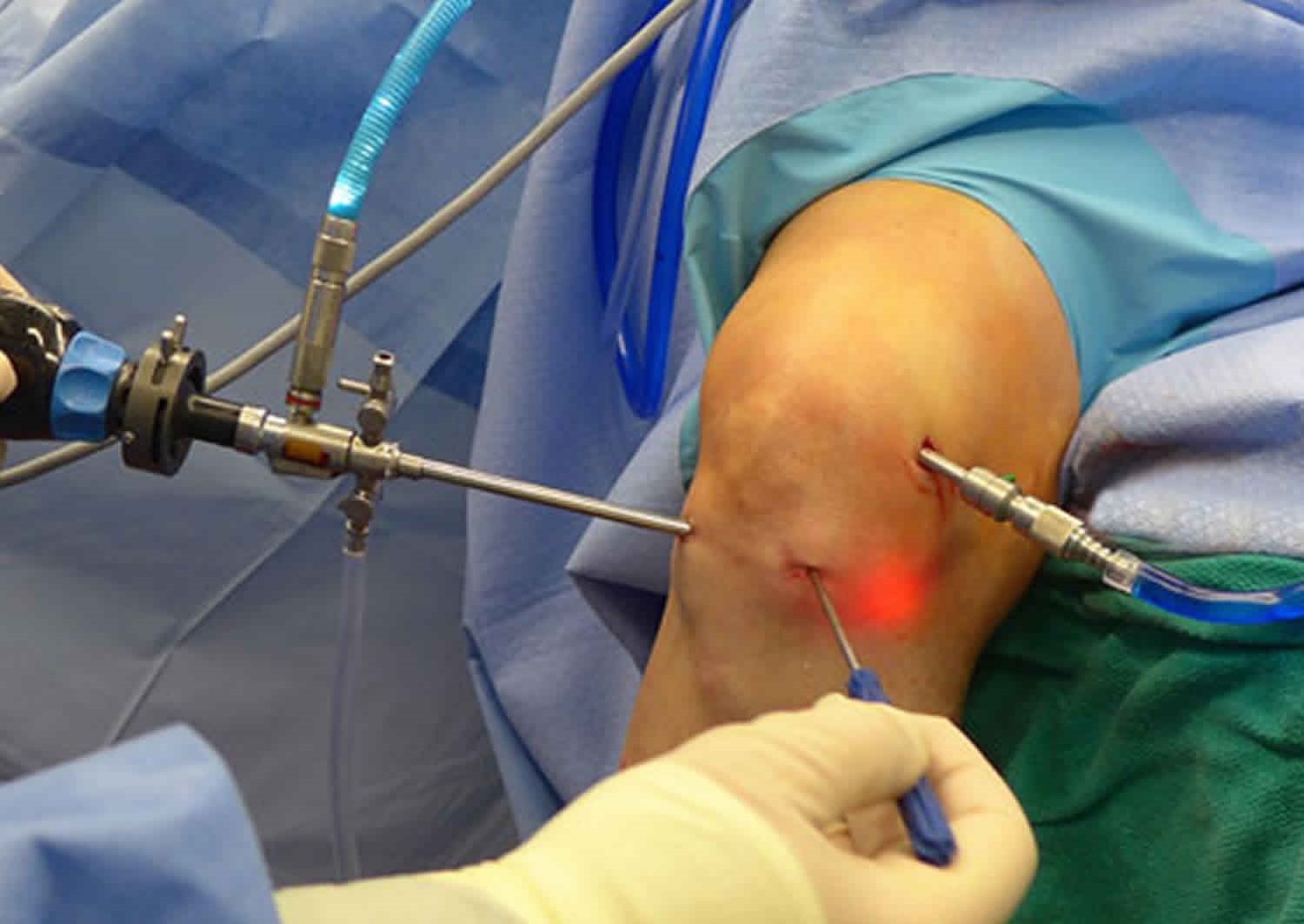
Knee arthroscopy is a minimally invasive surgical manipulation that allows the accurate diagnosis of knee diseases by helping the real-time examination of the intra-articular structures and a variety of therapeutic surgical manipulations in the knee cavity.
Arthroscopy of the knee joint helps
-
to specify the diagnosis;
-
to take material for research;
-
to resolve the issue of the necessity and method for the surgery;
-
to determine the exact location of the pathological focus.
What are the indicators that an arthroscopy is the best option?
The indications that arthroscopy of the knee joint might be the best option can be divided into two groups: the diagnosis and treatment of the articular pathology.
Indications for arthroscopy are:
Indications of the need for arthroscopy are: the need to diagnose the knee articular pathology between traumatic, degenerative-dystrophic, inflammatory, autoimmune, or rheumatological types of injury. The necessity for biopsy of the joint capsule. Traumatic damages in the knee menisci. Injuries of the intra-articular ligament, especially of the anterior and posterior cruciate ligament(s). Arthroscopic sanitation of the knee i.e. the elimination of pus, blood, serous effusion from the joint cavity and the introduction of antiseptics and antibiotics to eliminate the inflammation is also possible. Another option is the need to diagnose and treat deforming osteoarthritis in the knee joint.
The treatment of a recurrent dislocation of the patella. The elimination of loose elements in the joint cavity, e.g. bone fragments in fractures, osteophytes, blood clots or any other item that can cause acute blockades of the knee joint. Excision of a damaged area of the hyaline cartilage. Diagnosis and treatment of the intra-articular fractures of the bones. Restoration of the joint junction in the rheumatoid arthritis. Diagnosis of tumors of the knee joint.
Shoulder Joint Arthroscopy
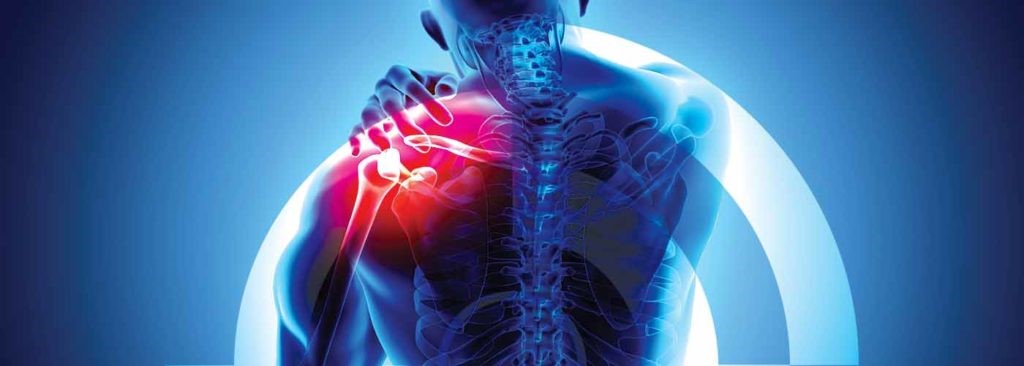
Arthroscopy of the shoulder joint is performed for various reasons, traumas and pathologies which are causing unpleasant sensations, pain or movement disorders, but which cannot be treated with conservative methods like physiotherapy, injections or medication administration.
Arthroscopy of the shoulder joint helps:
-
to specify the diagnosis;
-
to take material for research;
-
to resolve the issue of the necessity and method for the surgery;
-
to determine the exact location of the pathological focus.
What are the indications for arthroscopy of the shoulder joint?
Indications for arthroscopy are:
-
recurrent dislocation or subluxation of the shoulder;
-
diseases and damage to the synovium;
-
damage to tendons;
-
shoulder cuff rupture;
-
damage to the joint surface;
-
subacromial bursitis;
-
limitation of motion;
-
posttraumatic arthrosis;
-
chondromatosis (existence of the intra-articular bodies).
What are the contraindications for arthroscopy of the shoulder joint?
Contraindications for arthroscopy are:
-
acute and chronic infections of the shoulder joint;
-
contraindications for anesthesia;
-
pustular lesions of the skin integuments in the joint region;
-
reduction of the joint cavity;
-
bone and pseudo ankylosis.
Arthroscopic procedures on the shoulder joint:
Arthroscopy promotes:
-
recovery of the ligamentous apparatus with recurrent shoulder dislocations;
-
recovery of the damaged ligaments;
-
excision of cartilaginous beddings or osteal exostoses;
-
excision of loose cartilage or the inflamed tissue;
-
restoration or removal of the upper circumferential cartilage;
-
restoration of rotary movements.
Arthroscopic procedures can also be used for plexus brachialis shoulder nerve releases, cyst removal, recovery after fractures and for some other ailments.
Hip Replacement
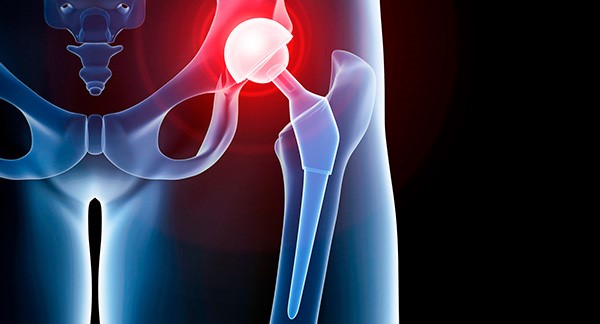
The hip is not only one of the most weight bearing joints in the body but is also essential for the simple activities of standing and walking properly. Hip replacement, either total or partial, can become necessary due to the aging process, wear and tear, or as a result of excessive weight or workload. Some diseases can also damage joint services, such as rheumatoid arthritis and osteoarthritis.
Who needs it?
The majority of total hip replacement individuals are aged 55 and over. For younger patients, partial hip resurfacing is often a viable option for treating persistent hip pain.
If other treatments such as physical therapy, pain medicines, and exercise haven't helped, hip replacement surgery might be an option.
Treatment:
Hip replacement is a surgical therapy. According to the patient's age, the clinical condition of the existing joint, their daily motion capacity and lifestyle, either the total replacement (replacing both surfaces of the hip joint with artificial material) or the partial hip replacement (replacing only the femoral head) is performed.
Patients should be prepared to spend between 4 and 6 days in the medical center, depending on their speed of recovery. During that time, they will be visited by physical therapists who will inform them of recommended physical exercises.
Rehabilitation may take many weeks, with the duration depending on the patient's overall health prior to surgery, how quickly the bone tissues of their hip joint cures, and how well they stick to the rehabilitation program.
Important points / Adverse effects:
Every surgical procedure has risks and benefits. Your individual results will depend on your personal circumstances, and recovery takes time. How long your hip replacement will last depend on many factors, and everyone's recovery will be unique. However, your doctor will discuss this aspect of the surgery with you.
Each of the following reactions or complications can occur during and after surgery and may require medical attention (such as further surgery) and implant removal.
Implant dislocation and leg-length difference, blood clots, infection, osteolysis, and implant fracture.
Knee Replacement
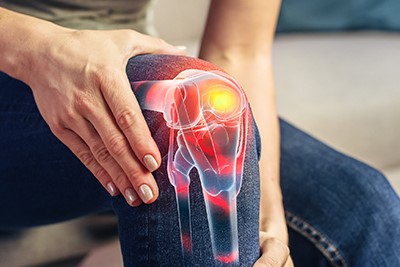
Knee replacement is surgery for people with severe knee damage. Knee replacement can relieve pain and allow you to be more active. Your doctor may recommend it if you have knee pain and medicine and other treatments are not helping you anymore.
After a knee replacement, there are many activities that you can reasonably expect to be able to do, including recreational walking, swimming, driving, cycling, ballroom dancing and climbing stairs. However, you will no longer be able to do certain activities, such as jogging or high-impact sports.
The benefits of a knee replacement include the reduction of pain, renewed stability and movement, an improved range of motion, the correction of deformities, and a quality-of-life improvement. Most patients end up pain free, are able bend their knees from 90° to 100°, and will be able to resume their daily activities without restriction.
Who needs it?
Knee replacement candidates are often between the age ranges of 65-75, mainly because patients are likely to keep the knee prosthesis for the rest of their lives (15-20 years).
New techniques allow for an implant to be removed and replaced, but our goal is to be able to implant a prosthesis that will last the patient a lifetime without revision.
If you have symptoms such as pain, crepitus, stiffness, the need to limp, a limitation of movement, or swelling which anti-inflammatory drugs and other pain killers are not helping, knee replacement surgery may be the right option for regaining the desired level of mobility.
The Treatment
Patients should be prepared to spend between 3 and 5 days in the medical center, but the speed of recovery can differ. During this time, the patient will be visited by physical therapists who will educate them on physical exercises to aid their recovery.
Physiotherapy is very important after the surgery to attain the maximum benefit of the treatment. Active and passive exercises will be started as early as possible, but the physiotherapy procedure and its duration will depend on the technique used in surgery and your recovery status.
Important points/Adverse Effects?
Absolute contraindications to total knee replacement include, knee sepsis including previous osteomyelitis, a remote source of ongoing infection, extensor mechanism dysfunction, severe vascular disease, recurvatum deformity secondary to muscular weakness, and the presence of a well-functioning knee arthrodesis.
Relative contraindications include medical conditions that preclude safe anesthesia, the demands of surgery and rehabilitation. Other relative contraindications include skin conditions within the field of surgery psoriasis, a neuropathic joint and obesity.